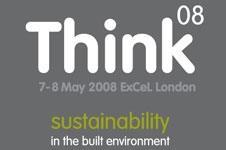Don’t reinvent the wheel until you know how to drive. Why innovation needs to focus on techniques as much as whizzy products, writes Jon de Souza, director of regions and demonstrations at Constructing Excellence, who is speaking at next month's Think event
When compared to other sectors, it is perceived that the construction industry does not carry out much research. However, when people start filing patents for the humble comb-over (as happened in 2004 in the US with the claimants going on to win an Nobel prize) perhaps it’s time to realise that innovation is not always best measured in traditional terms alone.

The best way to drive innovation in the construction sector is to develop and refine existing techniques just as much as it is to invent new products and machinery. Developments in new technology will, it is true, make the construction sector more streamlined and efficient – but only if the people using the technology work collaboratively. As always, the true value of any sector is in its people and how they interact.
As an industry body for the construction sector, Constructing Excellence has always argued that there has to be a culture within which the benefits of innovation can be exploited. This is one of our founding principles, based on Sir John Egan’s 1998 report, Rethinking Construction.
To help foster an industry culture that celebrates and promotes innovation, Constructing Excellence set up the Demonstration Programme; a means by which the learning from innovative construction projects can be captured, and then shared with industry to influence change. Demonstration Projects also report against industry KPIs, the results from which are annually benchmarked against the rest of the sector. Unsurprisingly, the Demonstration Projects routinely out-perform other industry projects. And again, unsurprisingly, the number of Demonstration Projects with a sustainability focus has grown exponentially since 1998. In total, we now have over six hundred projects on our database.
The perception of the lack of innovation in the construction sector, which I mentioned earlier, is recognised in a NESTA (National Endowment for Science, Technology and the Arts) report, Hidden Innovation. Published in June 2007, the report examined six industry sectors traditionally known for their lack of innovation – one of which was construction. Luckily our sector didn’t embarrass us; the report concluded that innovation in the construction sector usually occurs outside the expected arena of R&D. Traditional R&D does not cover all the process-based innovation that happens in the construction sector – so while on paper our industry may look less-than-active, the reality is that its innovation simply flows through different channels.
There is a real need to increase innovation in the construction sector if we are to deliver on the sustainable construction agenda – such as the zero-carbon homes planned by Government. Already the industry is looking at how we can improve on existing sustainability targets. One example is to look at the adaption of existing buildings to climate change as well as mitigating against future CO2 emissions. Producing zero-carbon homes is laudable only if we look at the bigger picture – they may be carbon-neutral to build and live in, but there are real risks if they are not designed and constructed to deal with the climate change that is going to occur. Homes and offices in the UK will need to cope with hotter summers and wetter winters – and if plans to build new homes on flood plains go ahead, they will need adequate flood protection.
The Demonstration Programme is already highlighting the construction projects which are looking at the latest ways of entrenching sustainable practices – whether it’s making zero-carbon homes a reality, or refurbishing existing homes to reduce their CO² output. Our goal now is to make sure that the Demonstration Programme, and other schemes like it, will encourage mainstream take-up of innovative technologies and the collaborative working methods that so often go unrecorded.
Postscript
Jon de Souza is speaking at the Think08 conference, which takes place on 7 and 8 May. For more information in the event, which also includes a free exhibition, go to




























No comments yet